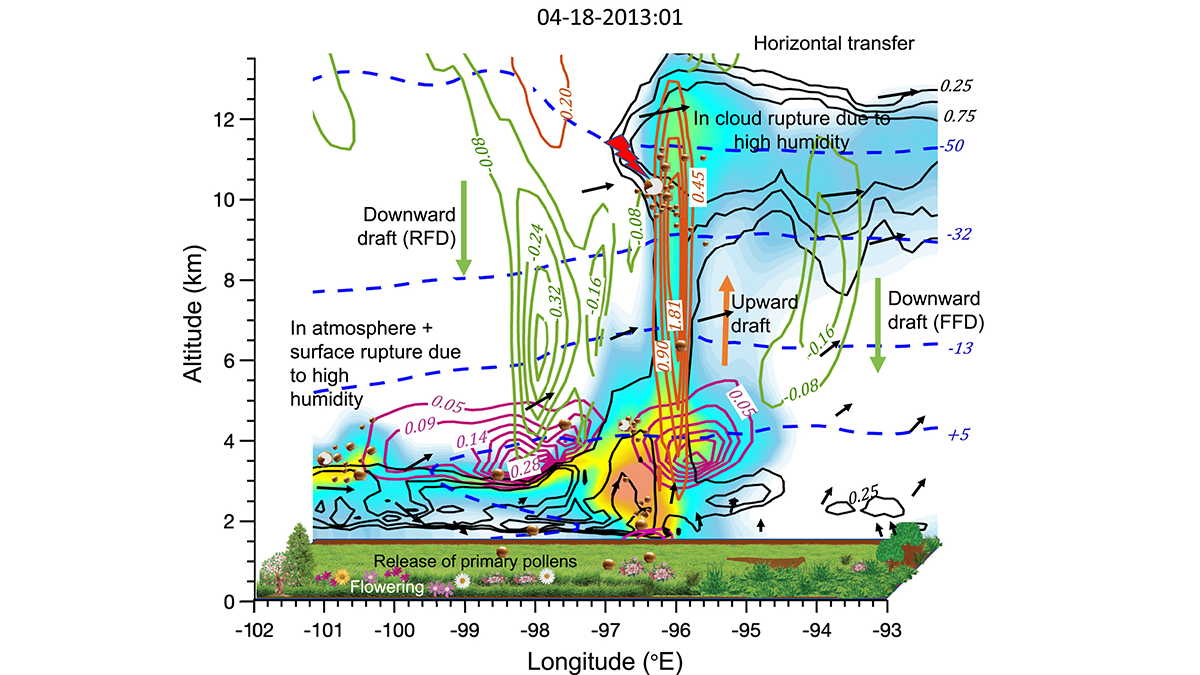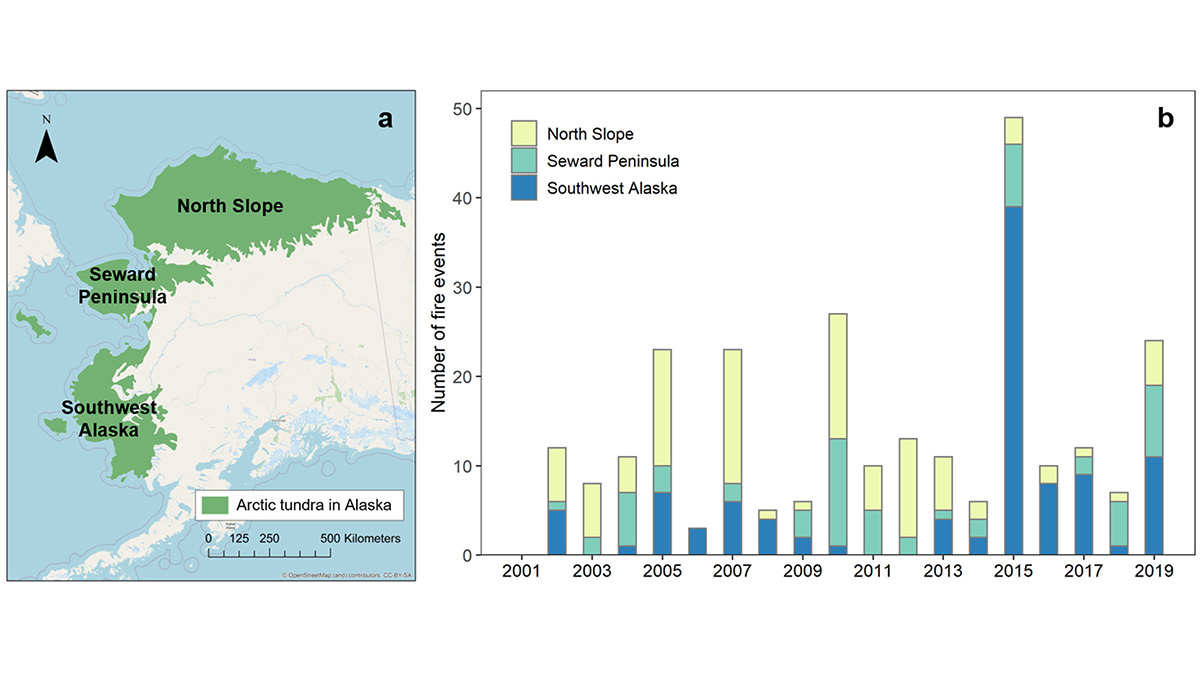Previous research indicated aerosols in ship exhaust could enhance lightning. New research indicates the ships themselves may be to blame as well.
lightning
Wet Conditions Delay Wildfire Detection
When accompanied by a considerable amount of rainfall, ignition of wildfire by lightning over forested land may not be detected until days later.
Lightning-Caused Wildfires are 80 Percent More Likely Under Dry Vegetation
Mimicking a randomized control trial of wildfires, scientists use satellites to uncover the key role of vegetation dryness in wildfire risk, aiding wildfire management and preparedness in California.
Simulating the Journey of Pollen in the Atmosphere
A new study couples an emission and transport scheme of pollen from vegetation, and explores pollen’s evolution in different atmospheric conditions and its impacts on clouds and precipitation.
How to Bend Lightning with a Laser Beam
For the first time, scientists have redirected lightning using a laser beam. And that’s just the start of what’s possible.
Scientists Can Now Map Lightning in 3D
A new approach enables meter-scale localization of lightning strikes. And it’s already illuminating the basic physics of the phenomenon.
New Crowdsourced Science Project Will Study Sprites
The NASA-funded project is asking sky gazers, storm chasers, and scientists to capture photos of sprites and other optical phenomena that flash above thunderclouds after a lightning strike.
Salt Spray May Stifle Lightning over the Sea
New research suggests that sea-salt aerosols seed large raindrops that starve clouds of water needed to make lightning. But not all scientists are convinced it’s simply about salt spray.
Gigantic Jet of Lightning Mapped over Oklahoma
The most powerful gigantic jet ever recorded fortuitously appeared over a sensor array in Oklahoma, enabling scientists to map the structure of the phenomenon for the first time.
Lightning in Alaskan Tundra Ignites Most Fires
Cloud-to-ground lightning is found to be the most important controller of wildfire occurrence in the Artic tundra of Alaska from 2001 to 2019.










